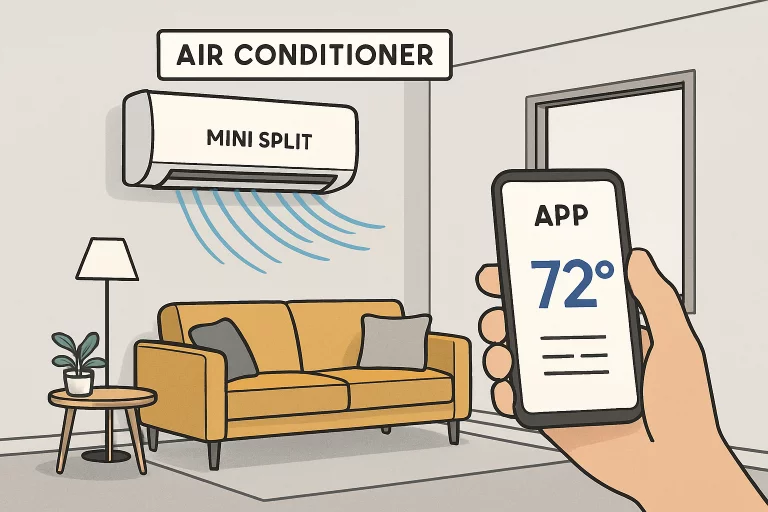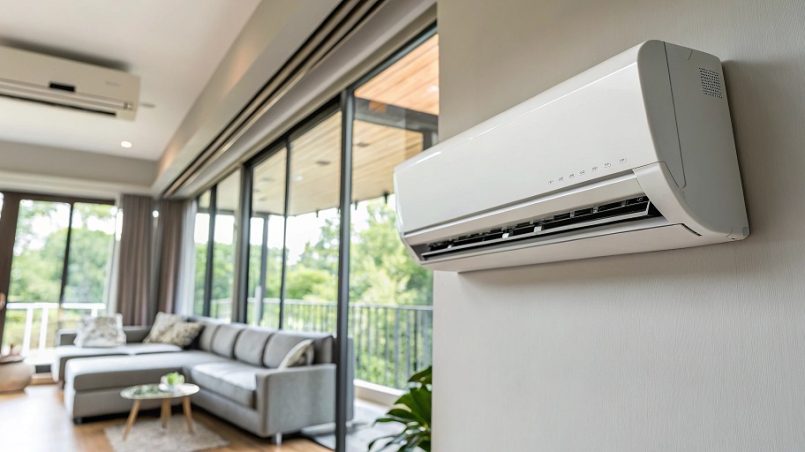Introduction to Mini Split Air Conditioners
As home cooling technology continues to evolve, mini split air conditioners are quickly becoming the solution for homeowners seeking flexible, efficient, and modern approaches to climate control. Unlike traditional central air systems that require extensive and sometimes invasive ductwork, mini-splits allow for simple, direct installation in both new homes and older properties. This makes them especially attractive for historic residences or those with unique architectural features that would be compromised by retrofitting complete ductwork systems. With the proliferation of DIY mini split air conditioners made easy, homeowners are increasingly empowered to take charge of their indoor comfort with user-friendly systems, reducing installation costs and expanding accessibility to advanced climate technology.
Mini split systems deliver targeted comfort by installing compact, efficient indoor air handlers in individual rooms or zones. This zoned approach provides unparalleled control over indoor climates, enabling families to cool specific areas independently based on changing needs and preferences. In contrast to the one-size-fits-all system of central AC, mini splits personalize comfort for every occupant. As demand rises, advanced cooling becomes an achievable reality for more people. Their growing popularity signals a shift in how we think about home comfort, prioritizing convenience, efficiency, and personalized climate management.
Energy Efficiency and Cost Savings
Mini split air conditioners have set a new standard in energy efficiency, which is one of the primary reasons they have surged in popularity. Traditional ducted HVAC systems, even when well-maintained, can lose up to 30% of their energy through leaks, holes, and poorly insulated ducts, based on findings from the U.S. Department of Energy. Mini splits, however, operate without these energy-draining components by delivering cooled air directly into specific zones or rooms, eliminating this significant source of waste. This direct approach means less energy is consumed for the same cooling effect, lowering utility bills and reducing overall system strain.
Further boosting their efficiency, mini splits can be adjusted to meet the real-time occupancy and temperature needs of each space in your home. Instead of cooling the entire house when only certain rooms are occupied, you can program mini splits to maintain higher temperatures in unused areas and focus on comfort where needed. Over months and years, such adaptive controls result in substantial cost savings and maximize energy conservation, making a mini split investment financially rewarding. These lowered power demands also contribute to broader environmental health goals, as households collectively use less energy and place a lighter load on community resources.

Smart Technology Integration
Integrating innovative technology into mini split systems has revolutionized how homeowners interact with their cooling systems. Many models now feature Wi-Fi connectivity, allowing users to control their indoor climate from their smartphones or tablets, no matter where they are. This means you can turn on your cooling system before you get home, adjust settings for unexpected guests, or shut down units remotely if you forget to turn them off—all from an intuitive app interface. Such flexibility dramatically enhances convenience and ensures your living spaces remain comfortable on your schedule.
Beyond remote control, many mini split systems are designed to work seamlessly with virtual assistants and smart home platforms. You can set programmable routines, automate temperature shifts based on your daily habits, and even adjust using voice commands. Detailed energy consumption reports and performance analytics help users optimize their system’s operation for maximum savings and efficiency. This merging of advanced technology and climate control ensures an optimal balance of comfort, accessibility, and mindful energy use.
Improved Air Quality
Maintaining indoor air quality is more important than ever, particularly for individuals sensitive to allergens and pollutants. Modern mini split air conditioners address this by including advanced filtration features such as HEPA filters, charcoal filtration, and UV light purification. These systems are highly effective at capturing dust, pollen, mold spores, bacteria, and viruses, many of which can slip through less sophisticated filters or even be circulated by older ductwork-based systems.
Alongside cooling, mini-split systems with these filtration technologies contribute to a healthier living environment by actively removing contaminants from the air. This makes mini-splits ideal for households with children, seniors, or anyone prone to allergies or respiratory conditions. The result is more comfortable temperatures and noticeably cleaner air that supports overall wellness and reduces the likelihood of indoor air-related health issues.
Quiet Operation
Mini split air conditioning systems are renowned for their near-silent operation, setting them apart from older, noisier HVAC equipment. Thanks to cutting-edge engineering, internal units often run as quietly as 19 decibels—quieter than a whisper or the hum of a modern refrigerator. This quiet performance is especially beneficial for spaces requiring low noise levels, such as bedrooms, baby nurseries, libraries, and home offices, supporting restful sleep, deep concentration, and overall comfort.
The system’s external compressor, which generates most of the operational noise, is typically located outside the building, while the internal components are tailored for silent, efficient distribution of cooled air. This separation of noisy and quiet parts ensures living spaces remain peaceful, free from the roaring or vibrating sounds traditionally associated with central air systems or window units.
Design Flexibility and Aesthetics
Mini split air conditioners offer remarkable design flexibility, empowering homeowners to select installation styles that are as visually appealing as they are functional. Options include stylish wall-mounted units, unobtrusive ceiling-recessed cassettes, and versatile floor-mounted systems, providing the freedom to integrate cooling solutions without disrupting interior design. Modern units include customizable panels in various colors and finishes, enabling seamless coordination with your décor.
In addition to their technical prowess, mini split systems are celebrated for their subtle and sleek appearance. Their compact profiles and minimalistic lines ensure they complement, rather than detract from, room aesthetics. With such versatility, homeowners can prioritize efficient climate control and living space beauty, no longer forced to choose between function and style.
Environmental Considerations
Growing awareness of environmental challenges has pressed the HVAC industry to innovate toward greener solutions, with mini split air conditioners leading the way. Many contemporary units use R-32 refrigerant, which has a significantly lower global warming potential than older R-22 and R-410A refrigerants. This switch makes these systems safer for the planet and ensures compliance with stricter environmental regulations.
Their superior energy efficiency—compared to traditional units—further reduces greenhouse gas emissions, supporting efforts to mitigate climate change. By investing in mini splits, eco-conscious homeowners choose technology that delivers comfort and a lighter environmental footprint. This responsible approach to home cooling aligns perfectly with broader social imperatives for sustainability and energy awareness.
Future Trends and Innovations
The mini split market is witnessing explosive growth propelled by rapid technological advancements, heightened consumer expectations, and an urgent demand for sustainable, customizable climate solutions. According to recent research, the U.S. mini split air conditioning system market is projected to reach $2.4 billion by 2034, as homeowners, builders, and businesses seek more efficient, low-impact methods of staying cool. Explore the comprehensive report at U.S. Mini Split Air Conditioning System Market Drivers for ongoing updates on what’s shaping the industry, market data, and forecasts.
The next frontier for mini split technology is already emerging, with innovations that promise greater synergy with renewable energy sources, most notably solar power. Integration with renewable power slashes utility bills and further reduces environmental impact. AI-driven innovative features are poised to make predictive adjustments to maximize comfort and efficiency based on occupancy patterns, weather data, and learning algorithms. Check out The Future of Mini Split AC Technology for a deeper dive into these future-ready capabilities.
As consumer awareness grows and regulatory requirements evolve, mini splits are likely to continue leading the charge toward cleaner, smarter, and more adaptive home cooling solutions, redefining what comfort means for the homes of tomorrow.



